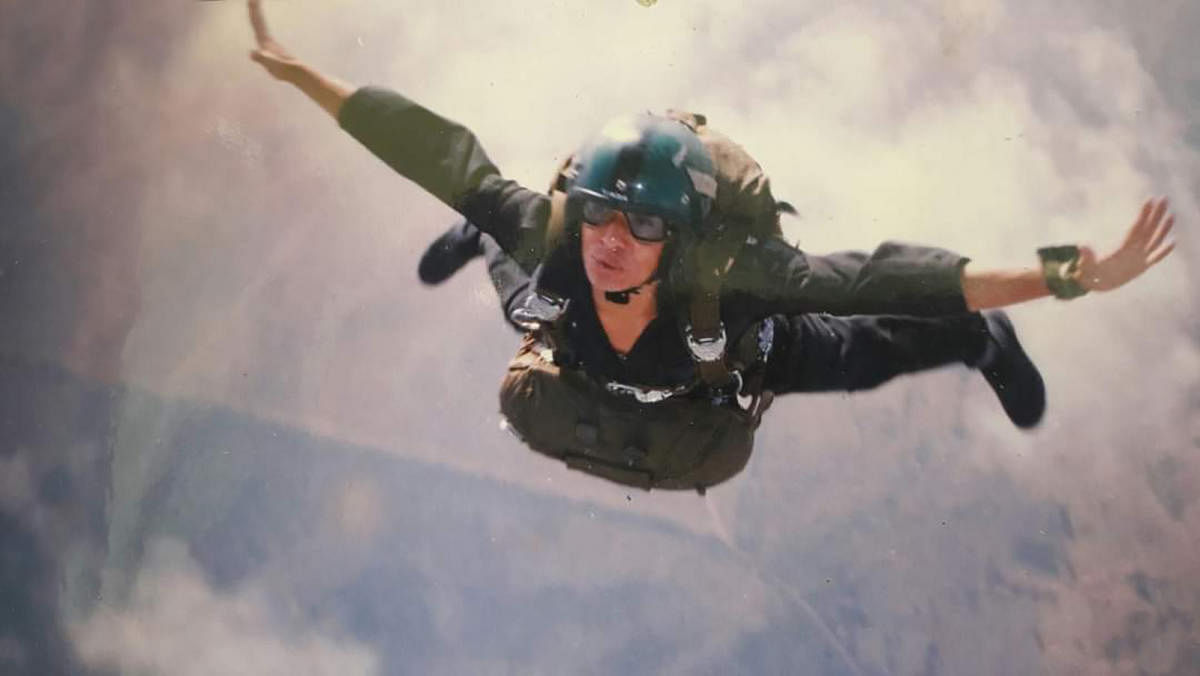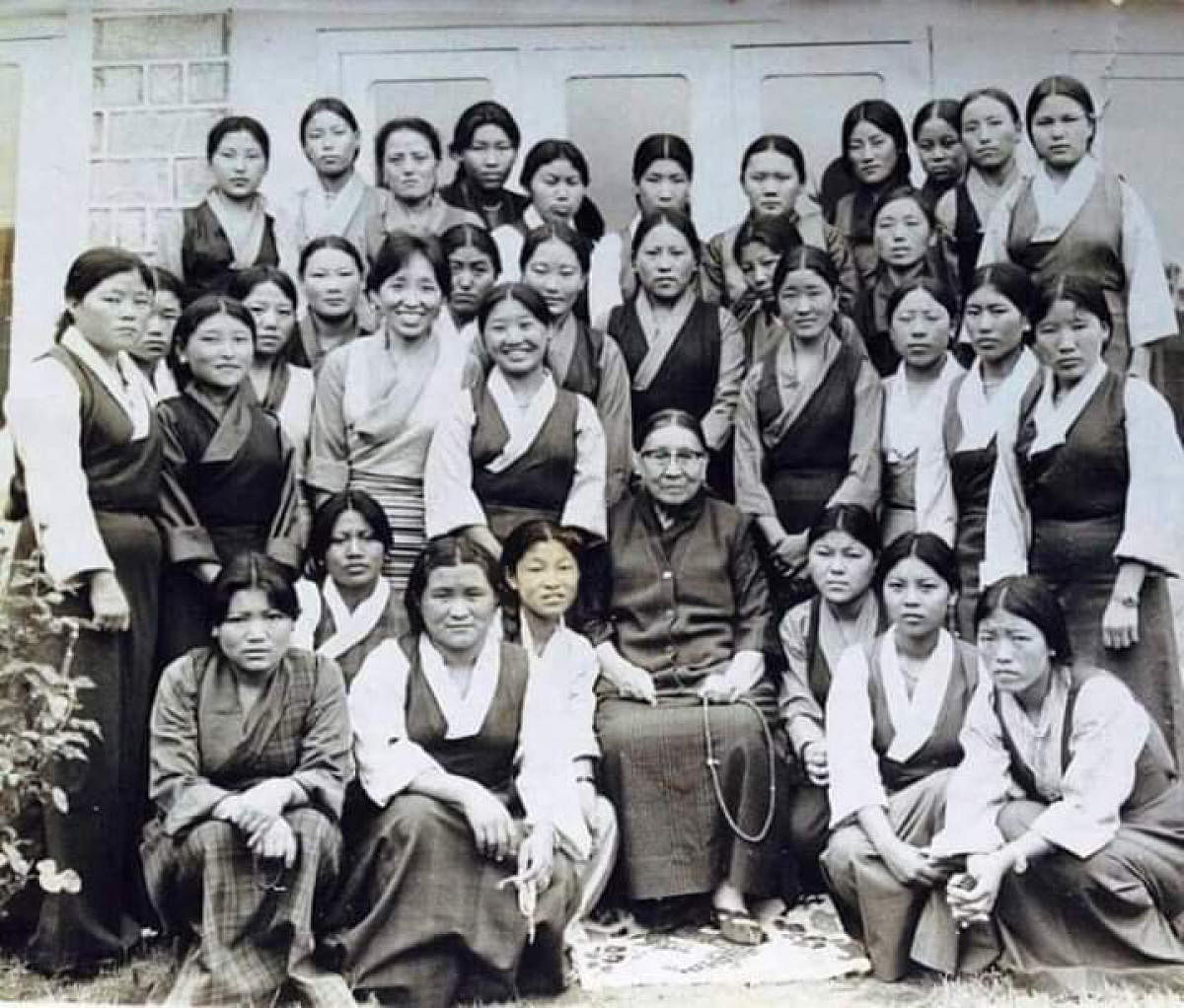

The death of Tibetan soldier Nyima Tenzin, who was killed on the night of August 29-30 in the Pangong Tso area when he stepped on a landmine during the ongoing India-China standoff, has drawn attention to a band of Tibetan soldiers who fight shoulder-to-shoulder with the Indian Army.
Perhaps Tenzin’s was the first ever public funeral of a Tibetan soldier or a “Son of snow” who are part of the once hush-hush Special Frontier Force (SFF) units that are now operationally deployed in Eastern Ladakh against the Chinese PLA troops on the snowy Himalayan heights.
Tibetan SFF veterans Lobsang Lungtok, Tamding Tamding and Dawa Tsering, who now lead the lives of civilians at the oldest Tibetan Settlement at Bylakuppe in Periyapatna taluk, Karnataka, all cherish their youthful years in army uniform. Even today, they yearn to fight the Chinese PLA soldiers and defend Indian territory.
The SFF was established with American military assistance during the last days of the India-China war in October-November 1962, from among the 80,000 Tibetan refugees who had fled to India in 1959 along with their spiritual leader, the Dalai Lama, to escape Chinese oppression in Tibet. The legendary Khampa guerrillas based in Nepal, who initially fought an irregular war against the Chinese soldiers in the late 1950s, formed the nucleus of the SFF. The Khampas are a Tibetan martial race and taller than the average Tibetan. After China lobbied with Nepal, the Khampas had to exit Nepal, but they began to launch covert commando raids on Chinese positions from Indian territory.
In the 1960s, the SFF headquarters, known as ‘Establishment 22’, had the famed US Green Beret (commando) instructors. The US Central Intelligence Agency and India’s Intelligence Bureau together created the SFF. It was a case of “Tibetan bravery and American weaponry” till the 1970s.
However, Tsering Lakyap, a Tibetan Youth Congress leader, laments that “after the US-China rapprochement in early 1972, Washington’s interest and funding towards the Tibetan Army and the liberation of Tibet declined.” The Green Berets returned to the US to fight their own battles in other operational theatres elsewhere around the globe.
The SFF comprises Tibetan soldiers and Indian Army officers who are trained in skydiving, high altitude or mountain warfare, snow craft, and martial arts, besides the standard military skills like weapons training, field engineering and demolition, and wireless communications.
“Given an opportunity today, we are prepared to fight the Chinese on the Himalayan heights and serve India, which is our second home,” SFF veteran Tamding Tamding says. They are physically far tougher than the Chinese troops, he adds.
Today, the SFF, which is organised into several Vikas battalions, serve a six-month tenure on the Siachen Glacier. Indian Army infantry or foot soldiers spend three months at these high altitudes. SFF veteran Lobsang Lungdok, who served 36 years in uniform, says “We are ‘Sons of Snow,’ which enables us to do a longer tenure at high altitudes.”
During the training at ‘Establishment 22’, whenever we were at the small arms range to practice firing with our assault rifles and submachine guns, the image of the Chinese soldier always came to mind as the target,” says SFF veteran Dawa Tsering, who was a Vikas soldier for 22 years.
A Vikas battalion with 670 personnel is similar to the 550-strong Indian Army para commando battalions, and both are smaller than the 900-strong infantry battalions.
The SFF, which participated in the Kargil conflict against Pakistan, suffered eight casualties in mid-1999. Similarly, after the Indian Army was deployed on the Saltoro Ridge/Siachen Glacier since 1984, the SFF has had several deaths due to enemy action and hostile climatic conditions. In 1971, when the SFF fought alongside the Indian Army against Pakistan in what was to soon become Bangladesh, it suffered 46 fatal casualties.
In 2009, while speaking to Indian Army officers in Leh, the Dalai Lama had clearly stated that India cannot afford to trust China, says Lobsang Lungdok. It appears that New Delhi has forgotten this sage advice.
Tsering Lhakyap, the Tibetan Youth Congress leader, says that only when Tibet is free of the Chinese and peaceful that India can become secure from the Chinese threat. After the Chinese annexation of Tibet, the buffer between India and China ceased to exist and the two Asian powers became neighbours and Chinese expansionist policies have led to military clashes time and again.
“India is our second homeland after Tibet and therefore India, as our adopted country, has a role to play in the liberation of Tibet. Late Prime Minister Jawaharlal Nehru had said Tibet is not a part of China considering that historically Tibet was independent for the last 3,000 years, with its own national flag and currency,” Lhakyap says. “History cannot be altered. Besides, the Tibetan people are ethnically and culturally different from the Chinese.”
Lhakyap says that the Tibetan community in exile is not keen on Indian citizenship in exchange for their Registration Certificates issued by the Government of India. Rather, he says, the aim of their exile in India is for them to be able to someday return to their homeland in Tibet, with assistance from the Indian State. Whenever they present a memorandum to the Government of India, the refrain is to have a trilateral meeting between Beijing, New Delhi and the Dalai Lama, he says.
Asked about the successor to the Dalai Lama, Lhakyap says no Tibetan anywhere in the world will accept a China-designated leader. We will accept only a person whom the Dalai Lama appoints as successor. He adds that “the Dalai Lama belongs to India and we appeal to the Government of India to consider His Holiness for the award of a Bharat Ratna.”
(The writer is a former Professor of International Relations and Strategic Studies, Christ Deemed to be University, Bengaluru)